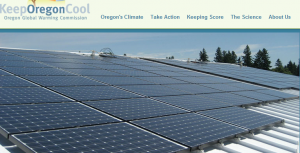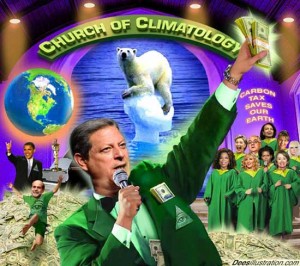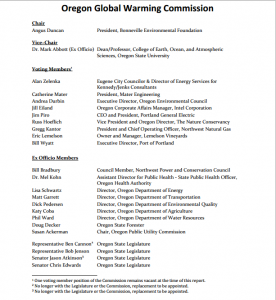
The dire predictions and claims in Oregon Global Warming Report are put to test by scientists who question assumptions made about man’s influence on climate.
Man made global warming skeptics are greeting the Oregon Global Warming Report with what you might expect from scientists: skepticism.
For openers, the group of scientists who range from Climate Scientist, Astro phyisicist, to Meteorologist wonder how the report can support this claim about rising temperatures in Oregon:

Climate change is here. Average temperatures in Oregon are rising.
From one of the many scientists weighing in on the new report:
The first statements on the Oregon Global Warming Commission’s website at http://www.keeporegoncool.org are,“Climate change is here. Average temperatures in Oregon are rising.”, but the NOAA National Climatic Data Center Climate at a Glance site at www.ncdc.noaa.gov/cag/ presents the official Oregon climate data indicating that:
· Oregon’s year to date (January – August) temperatures have trended downward at a rate of 0.5 degrees F per decade during the last 20 years.
· Oregon’s year to date (January – August) temperatures have trended downward more rapidly at a rate of 1.8 degrees F per decade during the last 10 years.

The Commission (see list nearby) also claims Oregon has reduced its greenhouse gas use.
These improved and up‐to‐date data indicate that Oregon met its 2010 greenhouse gas reduction goal, having arrested the growth of greenhouse gas emissions and, it appears, also establishing a downward emissions trajectory in which emission levels are expected to be reduced into the future.
I’m just a layman, but I would expect that in a great recession with record numbers of people out of work–who have no jobs to drive to, businesses have had to shutter, and production has gone overseas, that there might be reduced output of anything. They’re free to take a victory lap, of course, but where there’s less productivity, there is less CO2 and other greenhouse gasses emitted.
The report also assumes CO2 is what drives temperature increases, but that is in dispute. In fact, the rising sea tide is actually turning against that assumption.
The Commission also claims:
The problem: too much carbon in the atmosphere.
I recognize that there’s only one apparent scientist on the list of Commission members–see it nearby–but isn’t a bit flabby to call CO2 carbon? They’re not the same thing. This has been an ongoing problem with discussion of global warming. C02 and carbon are, for some reason, used interchangeably. Considering this is supposed to be some kind of scientific document, you’d think they put in the effort to be precise (Please see the full report below).
I asked one of the man made global warming skeptics about this and he was a bit more forgiving (and he’s a scientist and I’m not, so I add it here):
They interchange the terms regularly and do separate calculations, both for carbon consumption and CO2. The difference is just the molecular weight of C12 and its isotope burned from fossil fuel and the resultant oxidized atoms of carbon to oxygen forming the CO2 molecule.
For those non scientists out there, here’s a wonderful explanation of the difference between CO2 and carbon.
“Carbon” (chemical symbol C) is what we burn to get energy to power modern society. Carbon is the molecular building block for wood, charcoal and coal, and hydrocarbons (HC) like oil and natural gas. Cars and power plants do not emit carbon, except in the form of soot. Thus, talk of “carbon disclosure” or “reducing our carbon emissions” is misleading, unless one is confessing how much charcoal was used at a picnic, or apologizing for not having pollution controls on a wood-burning stove.
“Carbon dioxide” (CO2) is another natural byproduct of combustion, from power plants, factories, vehicles, homes, hospitals and other users of wood, coal, petroleum and biofuels. This is what many environmental activists, politicians and scientists blame for recent and future climate change.
Please enjoy reading the report below. More updates will follow.



